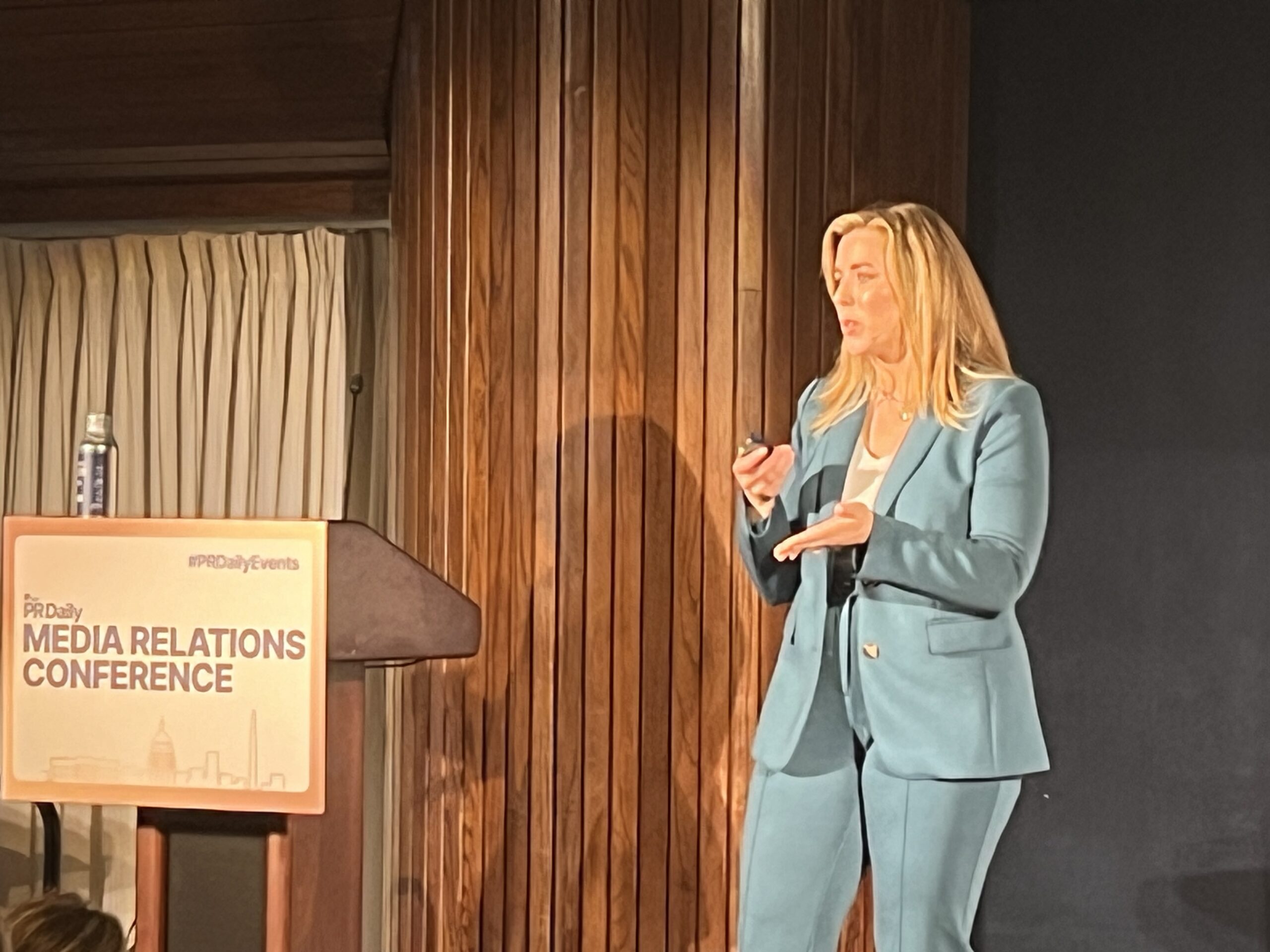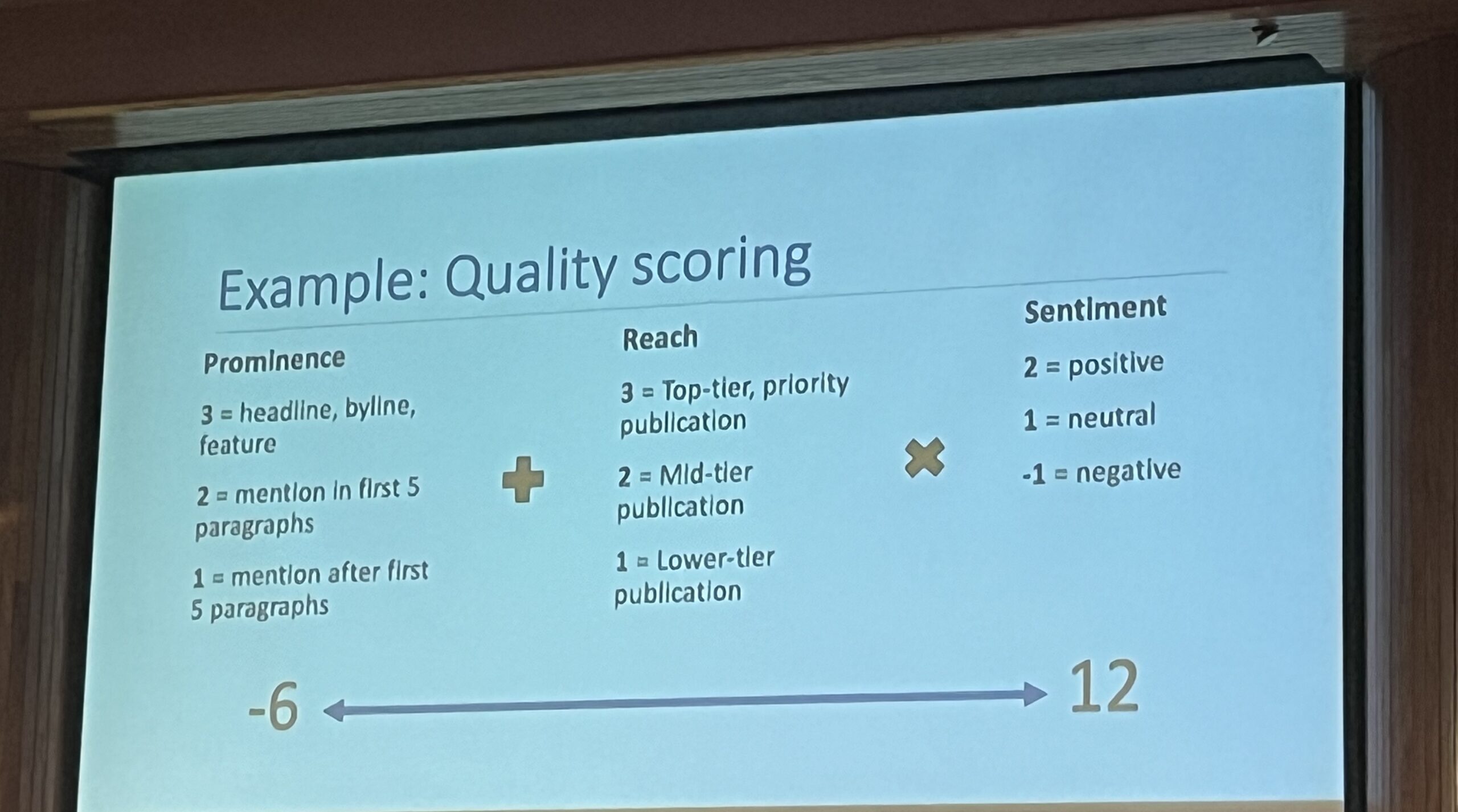4 categories you must measure in your media relations campaign
Live coverage from PR Daily’s Media Relations Conference.

Measurement is one of the most feared yet most important aspects of PR. But without it, everyone in an organization is flying blind. You can’t see whether your time, effort and money are well spent — and neither can your organizational leadership.
“As a communicator, we don’t always pause to think through, what’s the business model of our client or organization? What keeps the lights on? How do they make money?” mused Liz McGee, communications director at the Institute of International Finance, during her presentation at PR Daily’s Media Relations Preconference Wednesday.
According to McGee, measurement programs should enhance media relations results and decision-making as well as demonstrate the value of media relations.
During her presentation, she walked attendees through the four major types of media relations measurements and how they should fit into any campaign.
Here’s what to do.
Get the big picture
Before we begin measuring, we first have to determine what matters.
“The bottom line KPIs — key performance indicators — are what your CEO, your C-suite and key stakeholders care about,” McGee said. “Because that’s where the money is.”
Depending on your organization, these can vary. But some safe bets for big-picture KPIs include stock price, net revenue, sales or donations, sponsorships and so on.
“If your C-suite lives and dies by the stock price, you want to be able to connect your PR to the stock price,” McGee said.
You may already know these KPIs, or you may need to dig through annual reports, board minutes or internal interviews to get this data. McGee even suggested running an annual financial report through a generative AI tool and prompting it to return a breakdown of where the money comes from.
That will help you identify the stakeholders, activities and results that your leadership will value most.
Now that you know these KPIs, every other measurement should seek to ladder back to them.
4 types of measurement
McGee explained that there are four major buckets of measurement that should be included in most PR campaigns: Output, volume, quality and impact.
“I cannot tell you what exact metrics are going to be most useful to you,” McGee said. “But I can tell you that if you are not measuring all four of these categories, you are not getting a complete picture.”
Each of these categories increases in both difficulty of measurement and importance, but all should play some role in your measurement mix.
Let’s go through them one by one.
Output: Measuring your effort
Output is a blunt instrument for identifying how much your team is doing. Common types of output metrics include:
- Number of media interviews.
- Number of pitches sent/pitch open rate.
- Number of journalist interactions.
- Press releases sent/viewed.
- Content created.
- Reporter attendance at events.
- Media inquiries responded to.
The benefit of this metric is that it’s easy to track. You just need to be able to count. It’s also helpful in showing exactly how much your team does in a day — which can enable you to build a case for more budget — and as a way for benchmarking success within your own team.
But an A for effort will only take you so far. It’s time to go deeper.
Volume: Measuring the scale
Volume is the classic metric for media relations measurement: how many people saw the media you helped get placed in? Measurements include:
- Impressions
- Number of media metrics.
- Geographical mentions.
- SOV
- Circulation
- Number of social media shares on an article.
- Engagement
Volume tends to have a big “wow!” factor. Getting major placements can let you put lots of zeroes at the end of an impressions number and look great in a results deck.
But McGee shared an old adage: “If you want impressions, blow up a building.” You’ll get eyeballs, but it won’t tell you the whole story.
You need context.
Quality: Measuring how good it is
Getting a piece placed is often the myopic focus of a media relations campaign. But if the placement is negative, fleeting or in a publication that isn’t relevant to your KPIs, it’s only worth so much. To measure quality, you’ll want to look at each placement’s:
- Message resonance
- Tone/sentiment
- Prominence
- Priority readership/audience
- Impact: outcomes
The first gives a placement a score ranging from a -6 to a +12 based on prominence, reach and sentiment.

This is helpful either for ranking each individual story or for getting an aggregate look at an entire month, quarter or year’s press. For instance, if you had 100 press hits, divide your total by 1,200 to see your overall grade.
For a simpler measurement equation, McGee recommends simply dividing positive, top-tier media mentions by all media mentions. This helps you understand how many of the hits were exactly on target, and which could have been improved.
And remember: “If your client comes out looking good, it’s a positive, even if the story is negative.”
Impact: Measuring achievement
Impact is the most difficult to measure, yet most important of all the metrics. It’s tying everything back to those KPIs to see how your efforts helped reach the goals we identified earlier.
Means of measuring impact include:
- Conversions
- Brand awareness
- Public opinion
- Lead generation
- Mentions to leadership
Sometimes, you might not have all those metrics available. You might not have the data available of you to draw all of these conclusions.
In that case, you’ll want to consider a proxy metric, or one that can reasonably substitute for the ideal metric.
If you can’t track conversions outright, look at traffic driven to an event website. If you don’t have the money to do a public opinion survey to track opinion, look at social media mentions.
Remember: None of these metrics can stand alone. They all serve a particular purpose, and combined, they’ll give the richest view of your overall media relations success.
Allison Carter is editor-in-chief of PR Daily. Follow her on X or LinkedIn.







